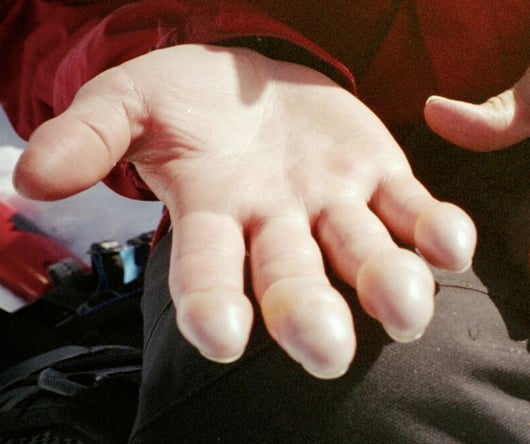Frostbite is one of the most common yet fatal diseases. Frostbite is a condition that results from exposure of the skin and tissues to temperatures below their freezing point. It potentially causes complications such as functional impairment, persistent pain, and psychological distress. Recognizing the importance of managing frostbite is essential for providing the best possible care to patients. In February 2022, a scoping review was undertaken, utilizing databases like PubMed and EMBASE. The goal was to identify pertinent published works employing the keywords “frostbite,” “management,” and “surgery.” Articles covering pathophysiology, classifications, radiography, complications, and both medical and surgical approaches were considered to formulate practical recommendations.
Frostbite is also known as frostbite, cold injury, pathophysiology, neuropathic pain, nociceptive pain, arthritis and vasospasm
Previously Known Literature
Swift rewarming in warm water (40–42 °C) remains the standard approach, while thrombolytic therapy has demonstrated efficacy in preserving tissue, supported by various studies. Radiographic imaging has become integral for assessing and managing frostbite injuries. Previously known facts and knowledge advocate for delayed surgery, incorporating soft tissue debridement and amputations guided by bone scans. Surgical interventions, including debridement, selective blister drainage, fasciotomies, surgical salvage, and skin grafts or flaps, are frequently necessary to optimize both form and function in affected patients.
Despite the lack of clear data on the prevalence and incidence of frostbite injuries, establishing a centralized national database is proposed to enhance understanding of diagnostic and management practices in frostbite care. Plastic surgeons play a crucial role in the interdisciplinary management of frostbite and should collaborate with a diverse team to determine the most effective treatment strategy for optimal patient outcomes.
Also Read: Activities for Healthy Brain
Identification and Care of Frostbite
Frostbite typically impacts areas such as the toes, fingers, ears, and nose tip initially. Before thawing, the affected region becomes hard, cold, and pale or bloodless. The skin becomes rigid, and the extent of freezing is challenging to discern. An added peril of frostbite is the absence of pain sensation, leaving the victim unaware of the frostbite occurrence.
How to Manage Frostbite
In managing frostbite, the primary goal is to restore body temperature as close to normal as possible before initiating thawing. It is crucial not to attempt warming the affected area through rubbing or chafing, as this can harm the cell structure of frozen tissues. The outdated notion of rubbing frostbitten areas with snow or ice is similarly incorrect and potentially harmful. Presently, a favored method of therapy involves rapidly thawing hands or feet in warm water baths. Thawing time depends on bath temperature and freezing depth; complete thawing is indicated when the extremity’s tip turns pink or red. If the area remains white after thawing, it suggests that local blood vessels are still affected and normal circulation has not resumed. Following rapid thawing, small blisters emerge, rupturing spontaneously in 4 to 10 days. A scab, often black, forms after blister rupture, with normal tissue already forming beneath. The thawed part is shielded to prevent refreezing and excessive heat. No bandages or dressings are applied, and the area is cleaned with mild soap. Regular digital exercises preserve joint motion, while whirlpool action aids in debriding devitalized tissues.
Quick Solutions
Antibiotics are employed if necessary, and toxoid booster injections are recommended. Post-thawing treatment focuses on infection prevention and function preservation.
Favorable outcomes are more likely with a brief frozen state, rapid rewarming, and the early development of large pink blisters extending to extremity tips.
Uncertain outcomes may result from spontaneous thawing at room temperature, prolonged freezing, or freezing on top of a fracture or dislocation.
Also Read: What is Disease X? Could it Trigger Another Global Pandemic?
Unfavorable outcomes are associated with delayed thawing in ice and snow, excessive heat thawing (>46°C [115°F]), dark or hemorrhagic blisters not extending to the distal tips, nonfreezing cold injuries followed by freezing, and freezing-thawing-refreezing cycles. The last two scenarios often necessitate amputation of the affected part.
Possible Complications
After freezing and treatment, potential major complications include infection and tissue death, potentially leading to amputation. Less severe consequences may include increased sweating, sensory loss, reduced subcutaneous fat pads in toes and fingers, persistent deep pain, restricted joint motion, and nail-bed alterations. Permanent effects encompass fixed scars, small muscle wasting, joint deformities, bone arthritis, and neurovascular involvement in extremities, resulting in an inability to shield against lowered temperatures and heightened sensitivity to cold.
Preventing Frostbite
To avert frostbite, it is crucial to ensure that clothing worn in cold weather remains dry, layered, and includes warm, loose handwear and footwear. Avoiding tight, constricting bands is important. Exposed skin should be shielded from the wind using face masks, hoods, and earmuffs. In cold conditions, individuals should stay vigilant, refraining from excessive alcohol and drug consumption that may impair mental or physical capabilities.


